Asset Details Report
Asset Details report shows a detailed report of the selected assets based on host information (attributes).
To create an Asset Details report, go to Reports > Create Report > Asset Details.
Step 1: Basic Details
Provide report title and report description for the asset details report. Click Next.
Step 2: Report Source
In the Report Source step, you can define the scope of the assets to be included in the report. You can select assets with asset name(1), asset tag(2), Source Type(3), or using a search query(4).
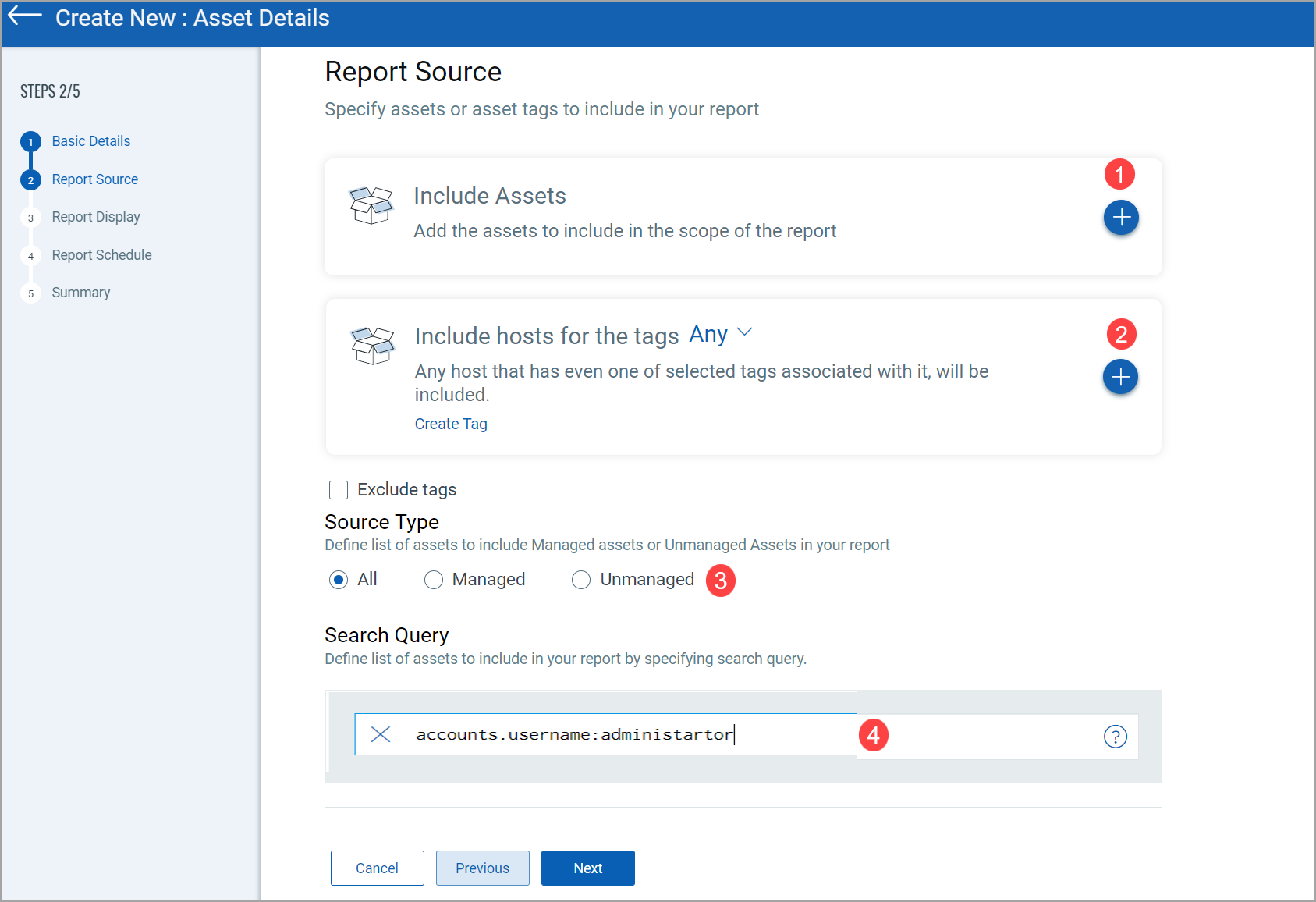
(1) Include Assets: Click ![]() to add the assets with the asset name. You can search and select an asset with an asset name.
to add the assets with the asset name. You can search and select an asset with an asset name.

(2) Include hosts with for tags: Click ![]() to add the assets with tags. You can search and select an asset with tags.
to add the assets with tags. You can search and select an asset with tags.
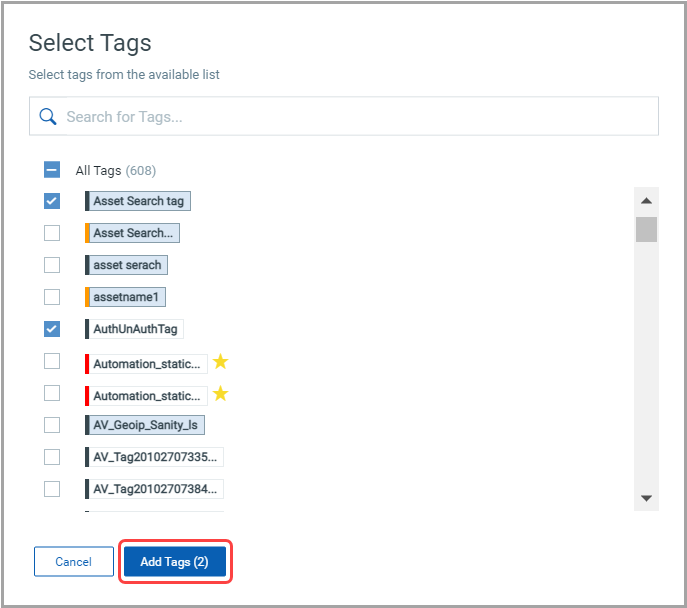
(3) Source Type: Using this option, Choose the type of assets: All, Managed, or Unmanaged to define the type of assets you want to include in your report.
(4) Search Query: You can select the assets using a search query.
Once you've selected the report source, click Next.
Step 3: Report Display
(1) In the Report Display step, select host attributes to be included in the report. The selected attributes will be column headers in the report.
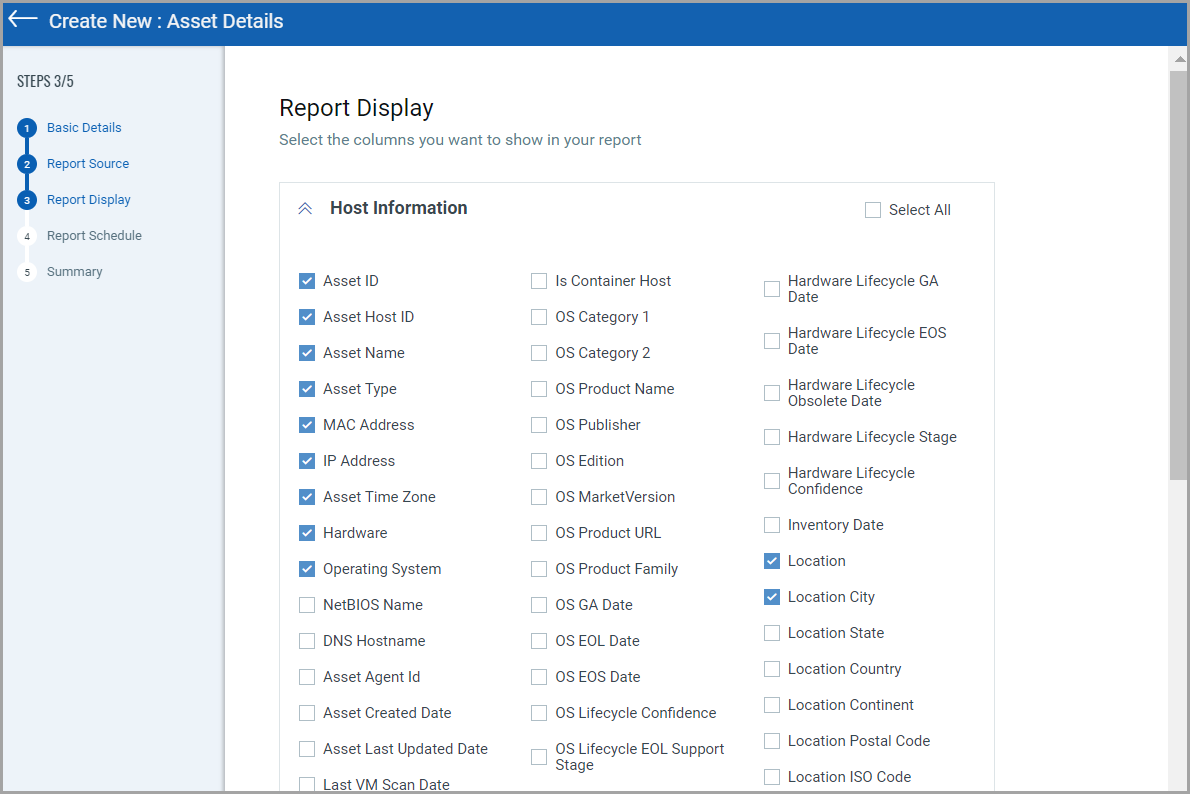
(2) (Optional) You can also choose to set up an email notification. Select Send Email (via Qualys) from the Actions list and complete the following steps:
i) Enter the email addresses in the Recipients field. You can enter up to a maximum of 50 email addresses separated by a comma.
ii) Enter the email subject line in the Subject Line field.
iii) Enter the message text in the Message field.
iv) Select the Restrict downloads checkbox. Enter the number in the Enter Limit field to limit the number of times the report can be downloaded from the report link that will be sent through the email notification.
Note:
- The email notification is sent after the report is generated for reports with ‘Completed’, ‘Failed’, or ‘Incomplete’ statuses.
- When you download the report, it is downloaded as a CSV file. When you try to download the report after the download limit that you set is reached, a text file is downloaded. When you open the text file, it mentions that the ‘Maximum download limit reached. Contact Support’.
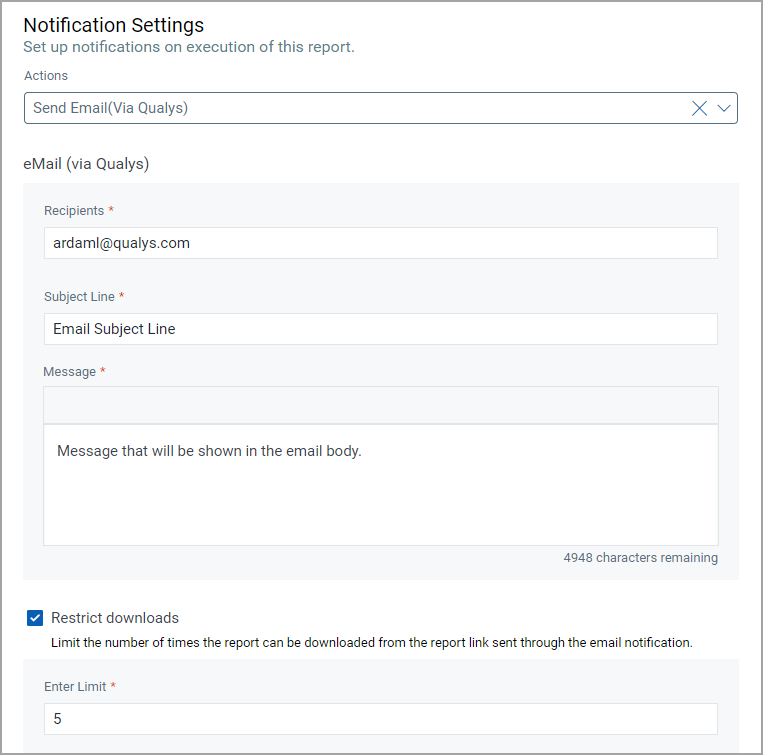
(3) Click Next.
Step 4: Report Schedule
In the Report Display step, you can define the schedule of the report for its execution.
On Demand: If this option is selected in the report, a report will be generated once it is created. Select the timezone for dates in the report to be generated.
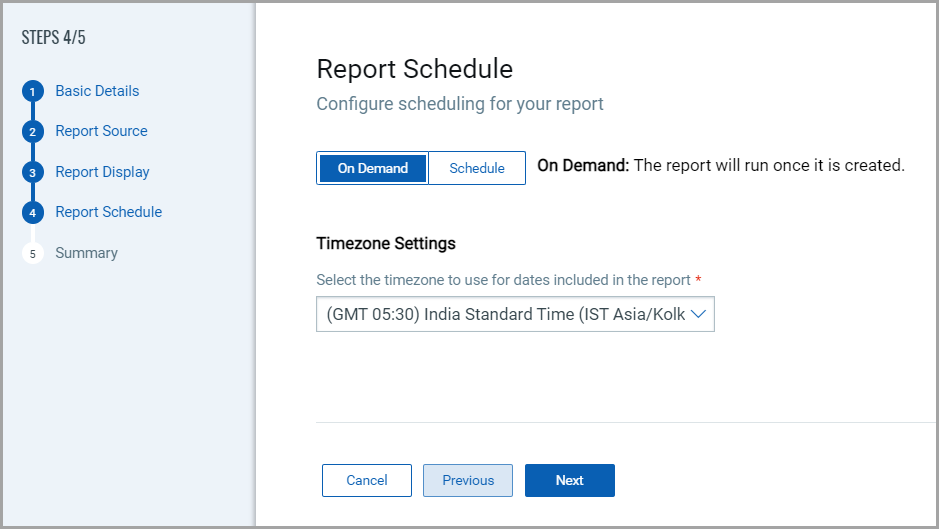
Schedule: If this option is selected in the report, a report will be generated as per the defined schedule. You can create a recurring schedule for report execution. Select the timezone for dates in the report to be generated.
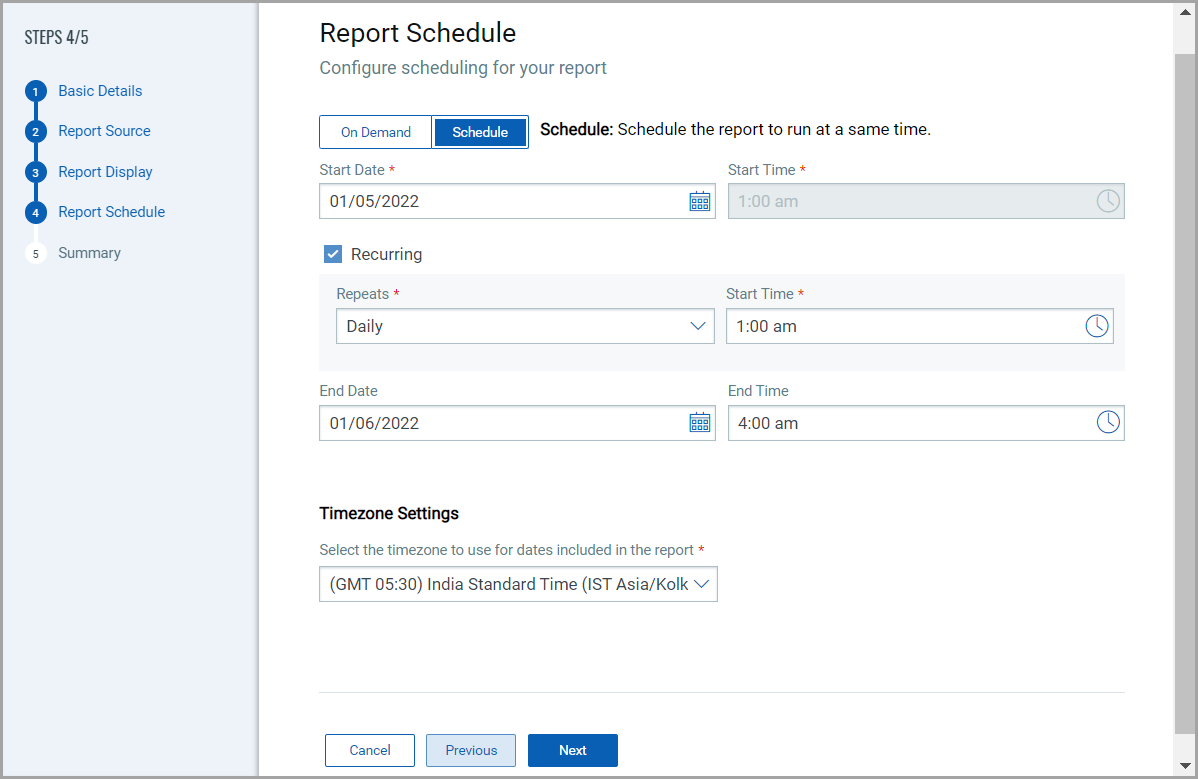
You can manage schedules (view info, delete, and pause/resume schedule) from the Reports > Schedule tab.
Step 5: Review and Confirm
Review and confirm your selections. You can edit basic details, report source, and report display from this step as well if required.
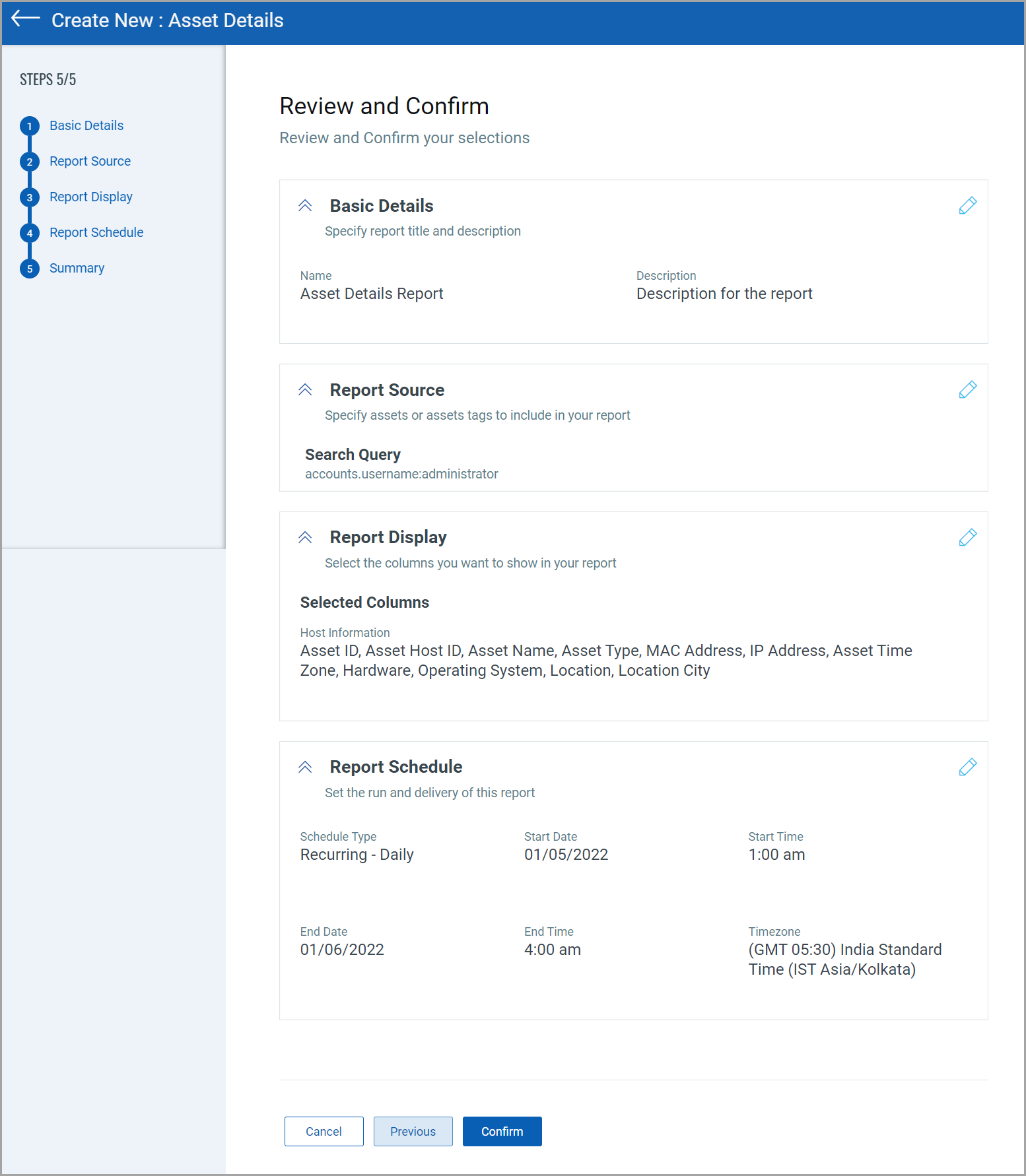
Click Finish. Once the report is created, it will be listed on the Reports page.

By default, Assets Missing Antivirus or End Point Protection Software report will be created which shows a detailed report of the selected assets based on the host information (attributes).
Once you create a report, it shows the 'Processing' status. Once report execution is finished, it will show status as 'Completed' and you'll be able to download the report.
From the Quick Actions option for a particular report, you can
- execute the report at any time with Run Now option
- download CSV format report with Download option
- delete the report with Delete option
- see report information with Info option